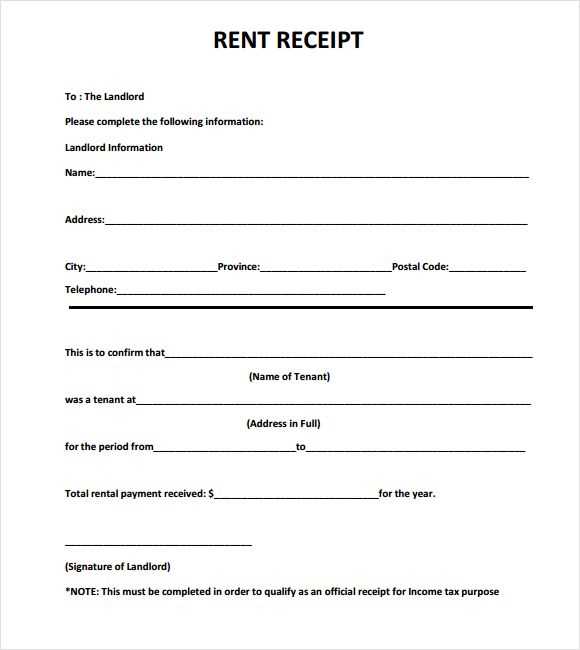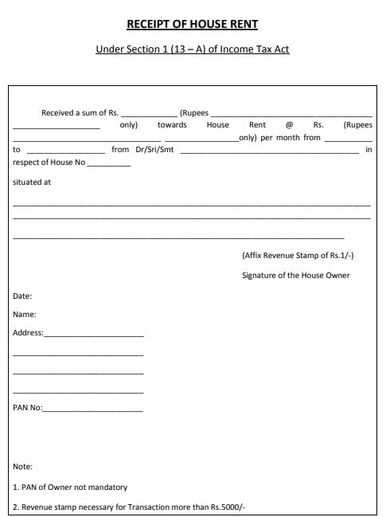
Using a rent receipt template streamlines the process of tracking payments and maintaining a clear record for both tenants and landlords. A well-structured receipt serves as proof of payment, preventing potential disputes and ensuring transparency between both parties. Customizing the template for your needs guarantees that all relevant details are included without unnecessary information.
When creating your rent receipt, make sure to include the tenant’s name, rental property address, the amount paid, and the payment date. Add clear labels for the payment method, such as cash, check, or bank transfer. If applicable, it’s helpful to note any late fees or partial payments, ensuring the receipt reflects the exact financial transaction.
It’s also a good idea to provide a receipt number for easy reference in case any discrepancies arise later. For additional security, include both the landlord’s and tenant’s signatures, confirming the transaction. Having a well-organized and accessible rent receipt template makes managing rental payments much more efficient and transparent for both parties.
Here is the corrected version:
To create a rent receipt template that is clear and functional, consider the following elements:
1. Rent Details
- Tenant’s name: Include the full name of the tenant.
- Landlord’s name: Include the full name of the landlord.
- Amount paid: Clearly state the rent amount paid by the tenant.
- Payment date: Mention the exact date the rent was received.
- Payment method: Specify whether the payment was made by cash, check, or bank transfer.
2. Property Information
- Address of the property: Include the full address of the rented property.
- Period covered: Indicate the start and end dates of the rental period.
Ensure the receipt includes space for both the tenant and landlord to sign, confirming the transaction. This provides legal clarity for both parties.
By including these essential details, the rent receipt template will serve its purpose effectively, offering transparency and protecting both parties in case of disputes.
- Sample Rent Receipt Template
A rent receipt serves as a formal acknowledgment of payment made by a tenant to a landlord. It provides both parties with a clear record of the transaction. Below is a simple template you can use to create a rent receipt.
Rent Receipt Template Example:
Receipt Number: [Unique Number]
Date of Payment: [MM/DD/YYYY]
Tenant Name: [Tenant’s Full Name]
Landlord Name: [Landlord’s Full Name]
Rental Property Address: [Address of the Rental Property]
Amount Paid: [Amount in USD]
Payment Method: [Cash, Check, Bank Transfer, etc.]
For the Month of: [Month/Year]
Balance Due (if any): [Amount]
Signature of Landlord: ___________________
Additional Information
Ensure that each receipt is unique by assigning a number. Include all relevant payment details to avoid confusion in future transactions. Adjust the format based on the needs of both the landlord and tenant, but keeping the basic structure consistent is key for proper documentation.
Begin with including the landlord’s full name and contact details at the top of the receipt. This ensures that the tenant knows who issued the receipt and how to reach them if needed.
Next, clearly state the tenant’s full name. This avoids any confusion and confirms who made the payment. You should also include the address of the rented property, specifying the unit or apartment number if applicable.
Amount and Payment Details
Indicate the total amount paid. Be sure to mention whether the payment is for a partial or full month’s rent. Include the payment method, such as cash, check, or bank transfer, along with any transaction reference or check number if relevant.
Date and Receipt Number
List the payment date and assign a unique receipt number. This helps to track multiple payments over time and provides a clear reference for both parties in case of any disputes.
Rent receipts must contain specific information to comply with legal standards. At a minimum, include the tenant’s name, address of the rental property, the landlord’s name, and the date of payment. Always specify the amount paid and the rental period it covers. Additionally, it is crucial to document the method of payment (e.g., check, cash, or electronic transfer). Failure to provide these details can lead to disputes and legal challenges over payment records.
What the Receipt Must Include
The receipt must reflect accurate transaction details. Make sure the amount paid matches the agreed-upon rent. If the tenant pays part of the rent or extra fees, clearly indicate what those payments are for. Also, a signature from the landlord or their representative confirms the authenticity of the transaction.
Tax and Legal Considerations
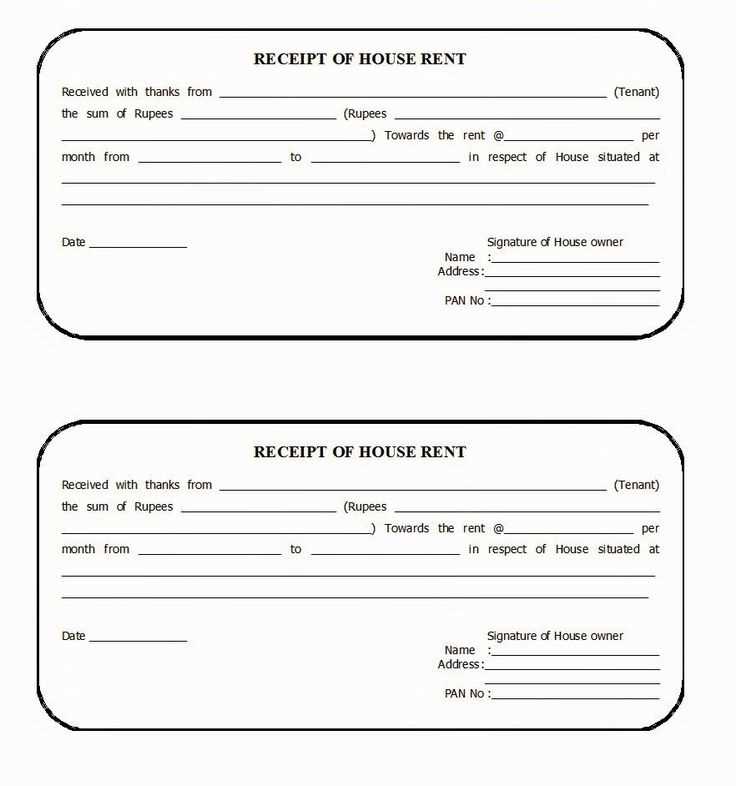
Landlords must keep copies of rent receipts for tax reporting and proof of income. These receipts can serve as evidence in legal disputes, whether the issue is a payment disagreement or eviction. Ensure your rent receipts meet local legal requirements by consulting with an attorney or checking your jurisdiction’s laws. Some places might require rent receipts for certain types of rental agreements or upon tenant request.
Different payment methods require different details on your receipt. Adjust your template based on the method used to ensure accuracy and clarity. Here’s how you can customize it:
Credit/Debit Card Payments

For card transactions, include the last four digits of the card number, the card type (Visa, MasterCard, etc.), and the authorization code. This adds security and helps both parties track the transaction. Do not include the full card number for privacy protection.
Cash Payments
When a tenant pays with cash, note the exact amount received. Add a brief mention of the method, such as “Paid in full by cash,” along with the date and time. This avoids any confusion and proves the transaction took place.
For electronic payments like bank transfers or PayPal, add details like the transaction ID or confirmation number, and specify the platform used. This allows for easy reference if any discrepancies arise.
Customizing these details based on payment method ensures that both you and the tenant have a clear, traceable record of the transaction.
Include clear dates for rent payment deadlines, as well as the start and end date of the rental period. This ensures both parties are on the same page regarding the payment schedule and lease duration. You can format these dates clearly to avoid confusion.
Key Dates to Include
List the following dates explicitly in your receipt template:
- Rental payment due date
- Start and end dates of the rental period
- Late payment grace period, if applicable
Payment Details to Specify
Ensure the payment amount, payment method, and any additional fees are outlined. This prevents misunderstandings and provides transparency between the parties. Specify whether the payment is for the full rental period or part of it.
| Payment Type | Amount | Payment Method |
|---|---|---|
| Rent | $1200 | Bank Transfer |
| Late Fee | $50 | Credit Card |
Double-check all the details before finalizing the document. Ensure that the names, dates, amounts, and any other relevant information are accurate and up-to-date. Even a small mistake can lead to confusion or disputes later on.
Use a Consistent Format
Stick to a consistent template for all receipts. This helps maintain clarity and ensures that nothing is overlooked. A uniform layout will also make it easier for both parties to review the document quickly.
Cross-reference with Original Records
Always compare the information on the receipt with the original lease or payment records. This minimizes errors that may arise from manual data entry or misunderstanding of the terms. If necessary, consult with your tenant or landlord to confirm any uncertainties.
Take Time for Proofreading
Proofreading is an easy step that can save a lot of trouble. Look over every field one last time to catch any typographical or formatting errors. It’s always helpful to have a second pair of eyes review the document for a fresh perspective.
Keep Backup Copies
Store electronic or physical copies of all receipts for reference in case of future disputes or audits. Keeping backups ensures that you always have access to your documentation when you need it most.
If you’re looking for specific rent receipt templates tailored to various needs, several reliable sources provide them for free or for a small fee. These templates are designed for a variety of situations, such as residential leases, commercial property rentals, or short-term stays.
1. Online Template Websites
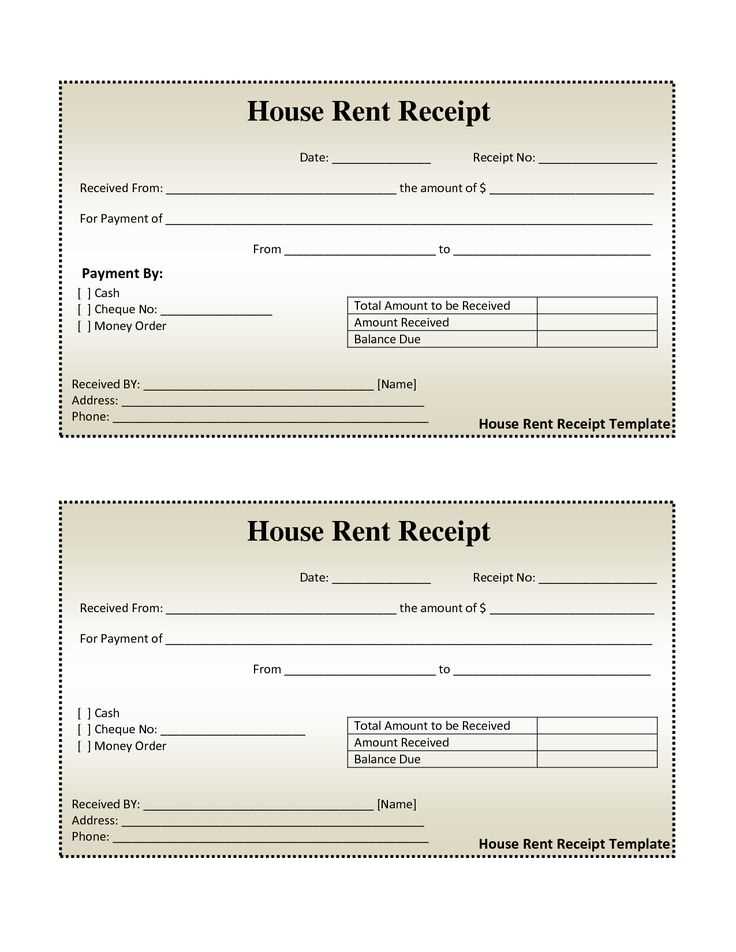
Websites like Template.net and Vertex42 offer a range of customizable rent receipt templates. You can filter options based on the type of rental situation, whether it’s for apartments, houses, or office spaces. These sites often allow for easy downloads in formats like Word, Excel, or PDF, which can be modified as needed.
2. Legal and Property Management Resources
Legal websites like Rocket Lawyer and LawDepot provide rent receipt templates that meet specific legal standards. These templates are particularly useful for landlords and property managers who need receipts that comply with local rental laws and regulations. Many of these templates include fields for necessary details, like lease dates and payment terms.
For customized or situation-specific templates, visiting property management forums or checking with your local landlord association can provide additional resources and examples.
Removing Redundancies While Maintaining Meaning and Structure
Focus on condensing your sentences without altering their core message. This keeps the text clear and to the point while retaining all necessary details. You can achieve this by identifying repetitive phrases or words and eliminating them. Aim for clarity and conciseness throughout your writing.
Key Steps to Streamline Your Writing:
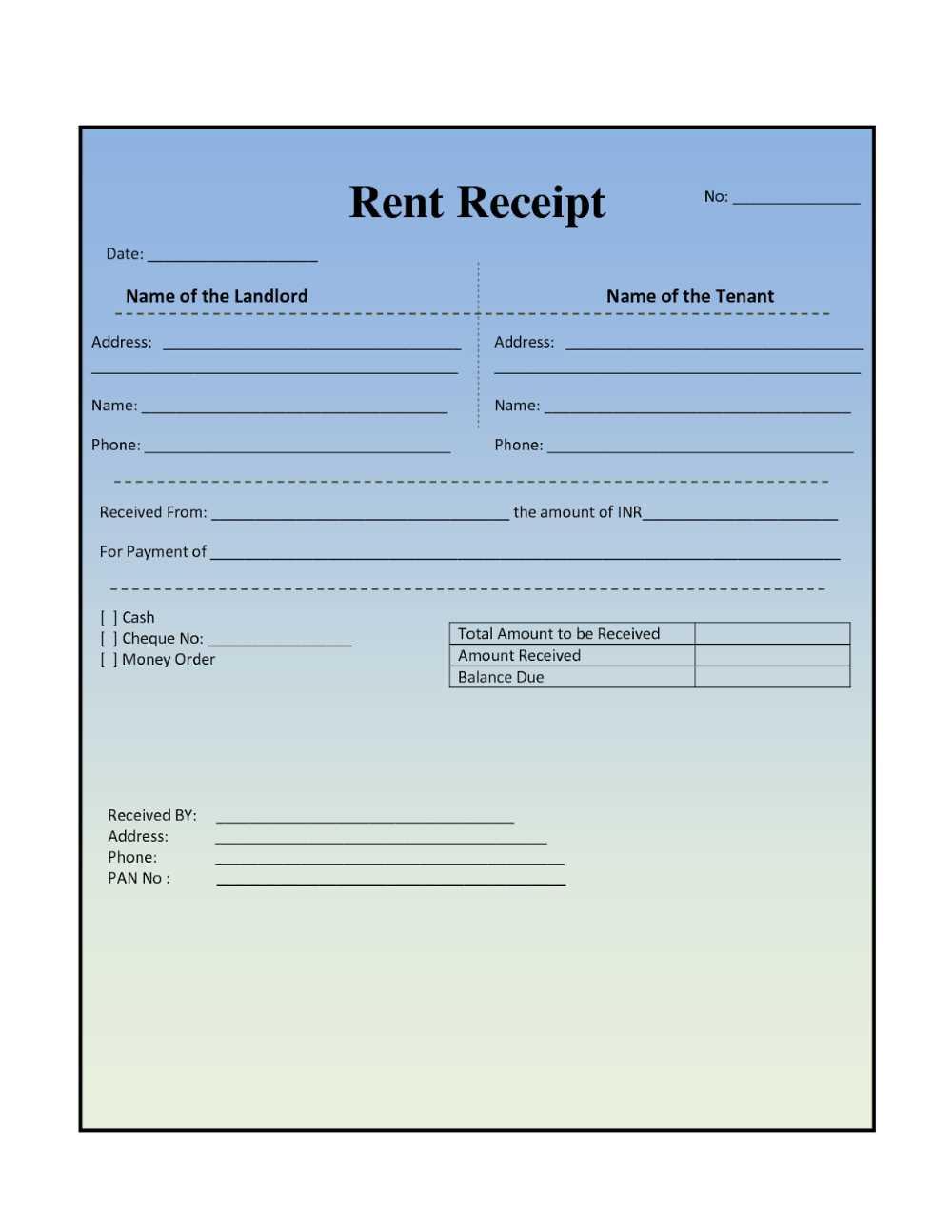
- Identify unnecessary repetition of ideas or words.
- Replace long-winded phrases with simpler alternatives.
- Maintain sentence structure for readability while removing redundancies.
- Read your text aloud to spot overly wordy sections.
By following these steps, your writing will become more efficient without losing its depth. Review each sentence to ensure it conveys the intended message in the most direct way possible. You’ll create more impactful content while keeping your audience engaged.

